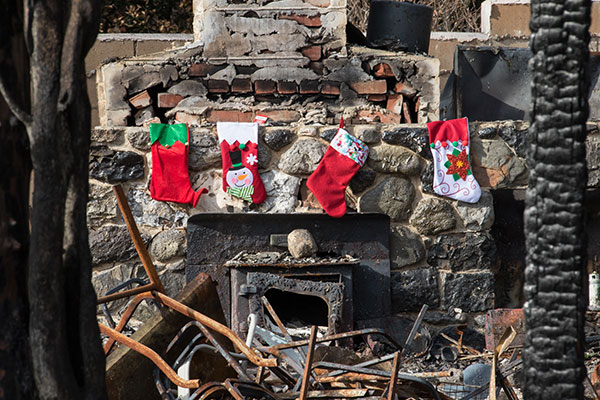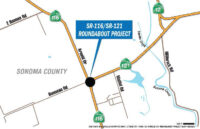By Susan Gorin —
Actually, the term “fire survivors” is more appropriate in our community. Survivors make it through an ordeal; victims do not always make it through. Our thoughts are with those who perished, as well as with their families who are left to grieve deeply, but our community is determined to survive, rebuild and thrive.
As a “Fire Survivor” and First District Supervisor, I know there are different outcomes for survivors, and we must tailor our aid to fit the needs of each. The range of people who lost their homes is as diverse as the population who live here: renters and owners; rural, urban and suburban; small and large businesses. We have farmers, vintners, doctors, teachers, artists, food servers, and the list goes on. We have some survivors with substantial financial resources, many middle-income folks facing financial challenges, and yes, those with very few financial options. We are, in short, a virtual rainbow of needs.
We also need to consider some who did not lose their homes as part of our group of Fire Survivors, as they lost jobs, wages, businesses and future incomes. The ripple effect, both financially and emotionally, reaches every corner of our community.
What is clear is we must work together to ensure that Sonoma County retains the talents and abilities of everyone who was here prior to the firestorm. I am concerned to see that out of 6,000+ homes lost, less than 700 people applied for FEMA relief housing. Where did everyone go in a market that previously had a rental vacancy rate of less than one percent?
Some displaced by the fires were able to quickly purchase and/or rent homes, and vacation rental housing stock was opened up, and those with second and third homes released them onto the market for rent. Additionally, people generously doubled up in their homes to accommodate friends and family. But it is also true that a number of people left the area, and it is quite possible that many more will opt out of this expensive market, instead of rebuilding their lives and homes here in Sonoma County.
Our ability to emerge from this crisis will be challenging. It will depend upon partnerships between public, private and non-profit entities to succeed and serve the community. To be sure, we will have to work harder, smarter and more collaborative than ever before in our history. The good news is I believe we can succeed, especially given the first steps taken, but the immediate fiscal challenges are significant and will continue for several years.
The effect of the fires extends into the county and cities budgets in critical ways. At the December 12th Board of Supervisors meeting, we received a report forecasting multiple year declines in property tax and sales tax for our County, cities, schools and special districts. The great unknown is how much of the cost of this disaster will be reimbursed by state and federal agencies?
Property assessments are now being adjusted appropriately for those who lost their home and other structures or suffered significant damage, and revised bills are being sent out with delayed payment schedules. The property tax revenue losses are estimated to be $18.4 milion for the current fiscal year and approximately $21M for the 2018/19 fiscal year. While some or all of the entire shortfall may be covered by state funding (and we are working with our legislators on this), we have to be fiscally mindful about our future spending appropriations – how do we allocate scarce funds for the greatest impact. Property taxes have a direct impact on funding many essential services, including road improvements, schools and emergency services. Thankfully, the county has a $53M reserve set aside, but we have a long road to recovery ahead for us, and we need to safeguard those funds and expend them wisely.
As we all witnessed, the generosity extended to our region during and after the fires was nothing less than amazing. Donations poured into several funds and emergency relief measures have been activated.
The Community Foundation of Sonoma County is leading an effort to ensure these funds are expended in a way that avoids duplication and maximizes impact. On November 28th, they held a “Resiliency Convening” conference of the major funders to present to non-profit organizations. The goal was to highlight funding priorities and brainstorm in order to support their mission to developing a grant-making strategy for the Resilience Fund.
The types of support offered through grants includes:
- General operating support, including staffing
- Nonprofit capacity building
- Cash grants to individuals
- Project specific
The specific populations of interest include, but is not limited to:
- People who lost their homes as a result of the fires
- Children and youth
- Undocumented immigrants
The types of service and/or programs include, but is not limited to:
- Case management / care coordination
- Behavioral health services
- Shelter and/or temporary housing
You can download the PowerPoint and listen to an audio recording of the event by visiting http://www.sonomacf.org/convenings/#.
Locally, I am reviewing a nonprofit survey conducted by my office to assess needs and assist organizations in not only meeting the needs of constituents, but also adding much needed post-fire services and capacity building to meet the immediate and future needs of our community.
The most important thing we can do now is collect accurate information from public, private and nonprofit entities in order to develop a cohesive plan that will sustain us through the lean times, while providing services that are relevant and impactful. As I have said many times, we are in this together and I firmly believe we can do it because, as Chief Sackett said, “We all have this thing called humanity” and it is this care for each other that will lead us through to the other side.










Be First to Comment